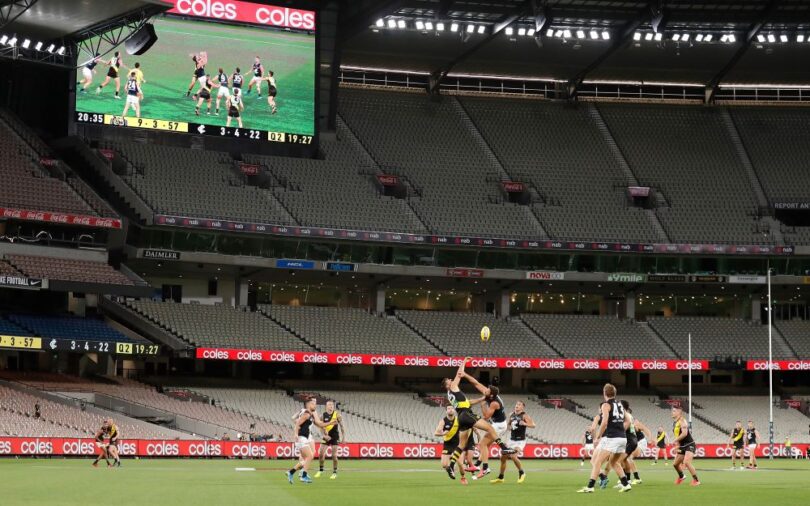After two years ridden with lockdowns throughout Australia, 2022 has been the year where normal returns.
With a few minor exceptions of course, Australians have been able to enjoy a normal life this year with no restrictions on mass gatherings of any kind. So why then have we seen a 26 year low attendance record in the AFL? (Excl. 2020-21 due to crowd restrictions).
Just before COVID hit in 2019, an average crowd figure of 35,122 was seen in the regular AFL season, a small but steady increase on the previous two seasons. So to see an average of 30,721 in 2022 – a drop off of 12.5 percent or 4401 attendees per game, it comes as quite a shock.
There are a multitude of factors that could bear the blame; loss of income during lockdown meaning families can no longer afford to go to the football, fear of COVID preventing fans from going to the stadiums, or even fans becoming increasingly comfortable and content with the viewing experience afforded to them in their own living rooms.
It is a double edged sword of sorts when the AFL are spending millions of dollars to produce the best quality broadcast possible, but still want fans to turn up to the games themselves.
The reason for lower crowd numbers could also be based on specific teams and their performances. Let’s take a look at North Melbourne.
Last appearing in finals in 2016 and on a decline since, finishing the next three seasons 15th, 9th, and 12th respectively – still some signs of hope and competitiveness that kept over 20,000 fans turning up every week.
Fast forward to 2022 after two seasons of finishing inside the bottom two, there was considerably less optimism around the Kangaroos. This has been reflected by a significant decrease in attendance of their home matches.
In 2019 they averaged 20,808 fans at each home game, but this season just 14,385. A staggering drop off of 6423 people and more importantly 30.9 percent. This is more than double the average percentage of less attendees when compared to the AFL as a whole, meaning North Melbourne is a strong contributor to the lower figures.
Given their poor form it does not feel as though COVID has played a genuine part in the drop off in numbers. This gives hope to the AFL that it could soon return to the 35,000 average it once boasted, if certain teams can improve and encourage their fans to come and watch again.

